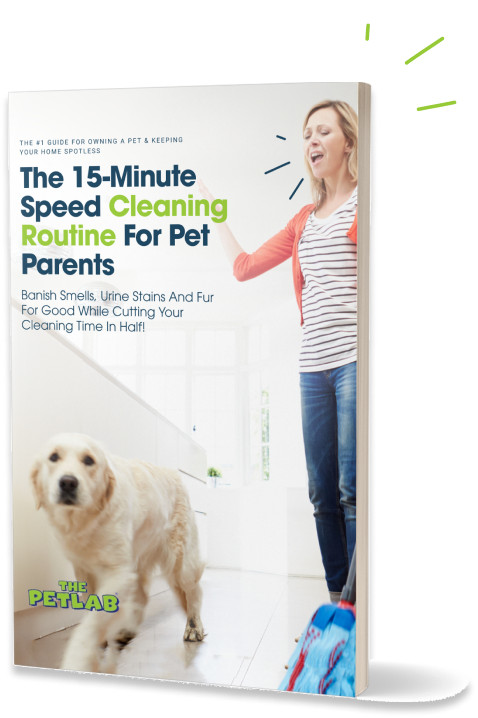These household heroes work hard behind the scenes and get little thanks—or much cleaning. Well, now it's their time to shine! ✨ Curious yet? Keep reading for a list of items frequently overlooked on spring cleaning lists.
Everyday essentials begging for a deep clean
Time for a home hygiene heart-to-heart complete with easy cleaning tips to bring said items up to snuff.
Shoe racks/closets
Researchers uncovered over 420,000 bacteria on a single shoe sole, including coliforms. 🦠
Every day, our trusty shoes brave the elements, collecting mud from the park, dust from the streets, and pathogens—from encounters with pet waste to public restroom floors—which hitch a ride right back onto your shoe rack.
How to clean: Clean, disinfect, and neutralise odours.
- Use a whisk broom to brush away solid dirt like dried mud.
- Wipe the surface clean of visible signs of grime.
- Spray a disinfectant onto the rack; allow time for the product to work.
- Wipe the surface dry.
Frequency: Once a week
Recommended product(s):
✔️ Indoor Surface Clean Bundle
✔️ The Grubby Paw (Machine-washable) Doormat
Pro tip: Steel and plastic shoe racks are the easiest to clean. Wood, MDF, and particle board are more challenging because they absorb liquids and odours.
Mops and buckets
Mop heads can contain 8 million bacteria per 100 cm².
Mops and buckets are a breeding ground for microbes from soiled floors and filthy mop water. Beware not to spread crud around your home from dirty equipment!
How to clean: There are no shortcuts. 😐
- Rinse your just-used mop with hot water.
- Soak the mop head in a disinfectant solution.
- Rinse, then wring out and hang it up to dry in a well-ventilated area.
- Scrub the bucket with hot, soapy water and rinse well before a final swish with disinfectant.
Frequency: After use.
Recommended product(s):
Pro tip: Too much soap/detergent can leave a filmy residue, which attracts more dirt and makes floors slippery.
Laundry hamper
We perspire around 1L of sweat daily—more with exercise and blistering weather. 💦
Laundry baskets collect dirty garments plus dust, dead skin cells, and even poop particles!
How to clean: Dust, sanitise, and eliminate laundry-related odours.
- Fabric hampers/liners: Pop in the wash like regular laundry.
- Plastic baskets: Spray disinfectant directly onto the surface, allow to work, then wipe dry.
- Wicker/rattan hampers: Disinfect the hamper inside and out using an enzymatic cleaner, focusing on crevices. Air dry to prevent mould and mildew, as these materials absorb moisture.
Frequency: Once a week.
Recommended product(s):
✔️ Healthy Habitat RTU Formula
Pro tip: Have separate laundry baskets for dirty versus clean wash.
Reusable shopping bags
A startling Canadian study found that eco-bag bacteria were 300% above the "safe levels" threshold. 👀
From supermarket trolleys to the trunk of your car, reusable shopping bags encounter many germy surfaces!
How to clean: Experts recommend washing in hot water, but it depends on the bag.
- Cloth/canvas: Machine wash separately from other items.
- Recycled materials: Spray antibacterial cleaner onto the bag (inside and out), wipe, then leave to air dry.
- Insulated bags/cardboard inserts: Wipe using a cloth sprayed with disinfectant, paying attention to seams/crevices where crumbs and liquids can accumulate.
Frequency: After doing groceries.
Recommended product(s):
✔️ Healthy Habitat RTU Formula
Pro tip: Keep different bags for raw meats, produce, and non-food items.
Toilet brush/plunger
Germs stick to the porcelain surface of toilet bowls; flushing doesn't remove them.
We avoid this task like the plague... but it's evident why these tools need cleaning.
How to clean: Here's the least unpleasant method.
- Give the item an initial rinse with fresh flush water.
- Fill the toilet bowl with enzymatic disinfectant. Swish the brush/plunger around and leave to soak briefly.
- Rinse again and leave to air dry before storing.
Frequency: After use.
Recommended product(s):
Pro tip: Use your toilet bowl and water from flushing for the least hassle.
Trash bins
Bacteria reproduce every 4 to 20 minutes. Fly eggs (= maggots!) hatch in as little as 24 hours.
Garbage cans collect all types of waste, making them a petri dish of microorganisms and mould, an insect magnet, and pest infestation waiting to happen.
How to clean: It's a straightforward process.
- Empty the bin.
- Rinse and scrub the inside with warm, soapy water.
- Sanitise inside and out by spraying a liberal amount of an odour-fighting disinfectant.
- Dry before use.
Frequency: Every 2 weeks. But spray disinfectant every time you take the trash out!
Recommended product(s):
✔️ Healthy Habitat RTU Formula
TV remote
Remote controls are dirtier than toilet seats.
This gadget is exposed to coughs, sneezes, spills, doggy drool, and unwashed hands. Meanwhile, you touch your face as frequently as 23x per hour... 😬
How to clean: It's a little more complicated, given the nature of electronic devices.
- Remove the batteries.
- Use cotton buds dampened with disinfectant to carefully clean around buttons.
- Wipe the entire surface with a gentle microfibre cloth sprayed with an antimicrobial agent.
- Dry before returning the batteries.
Frequency: Weekly. (More often during cold/flu season and if someone is ill.)
Recommended product(s):
✔️ Indoor Surface Clean Bundle
Pro tip: Never spray disinfectants directly onto the remote!
No more turning a blind eye and no more excuses. You've got this—and other germy items—with PetLab's range of enzyme-powered, multi-purpose products. Together, let's make every scrub, soak, and wipe count!


